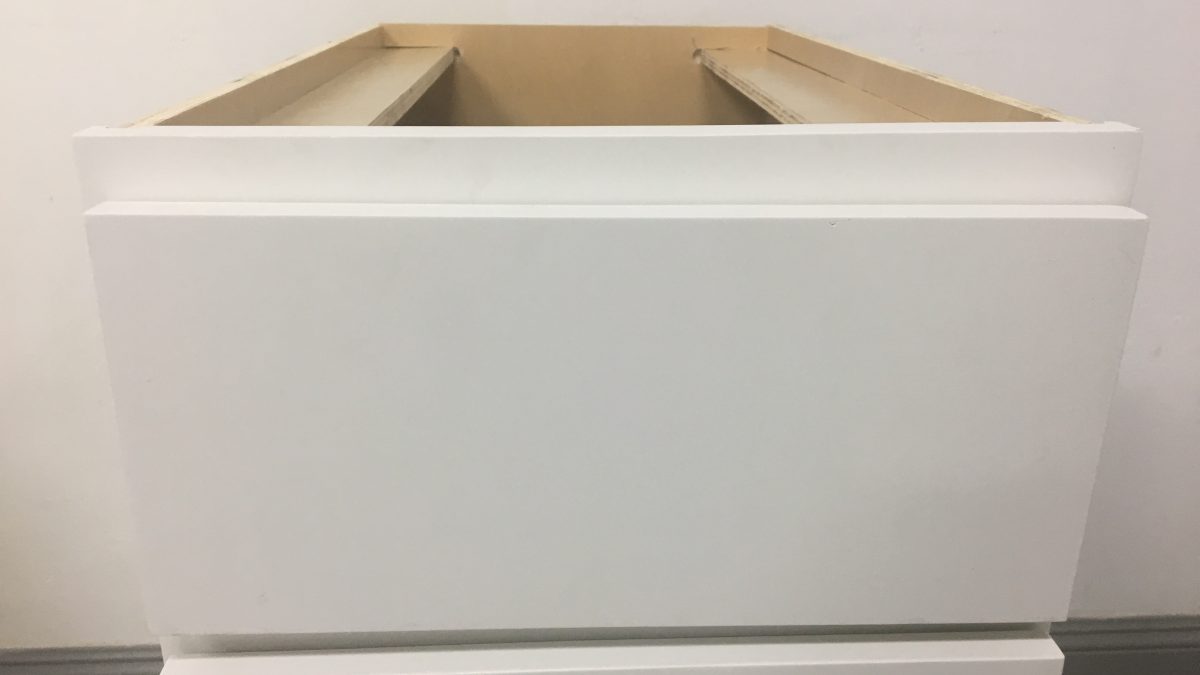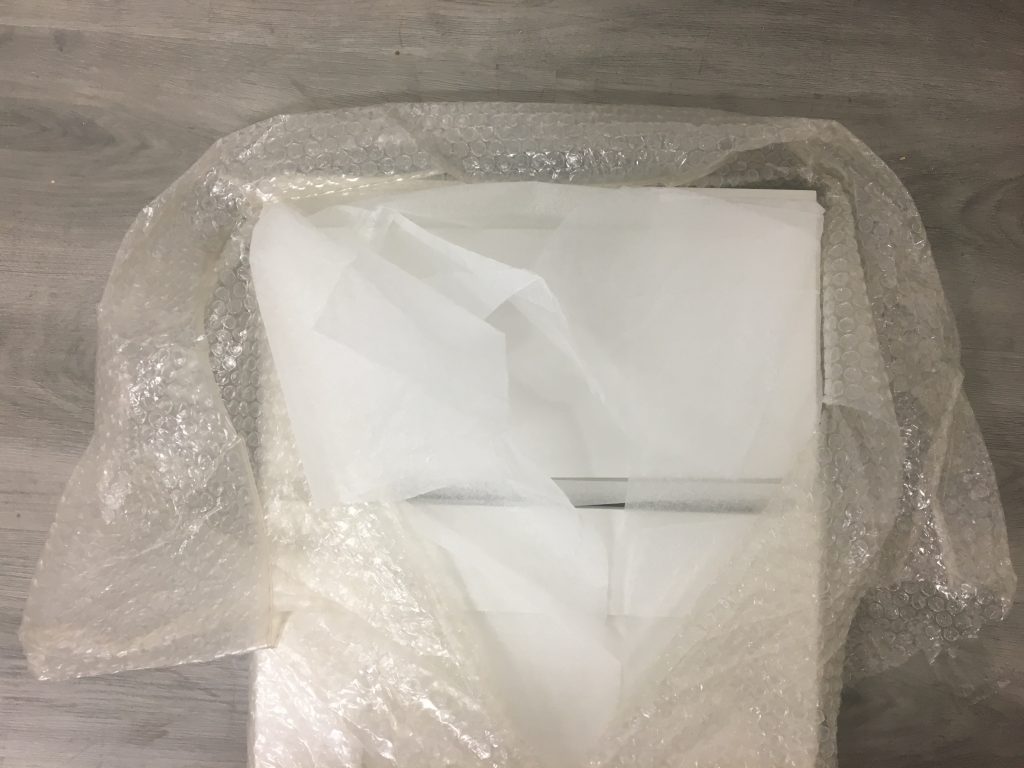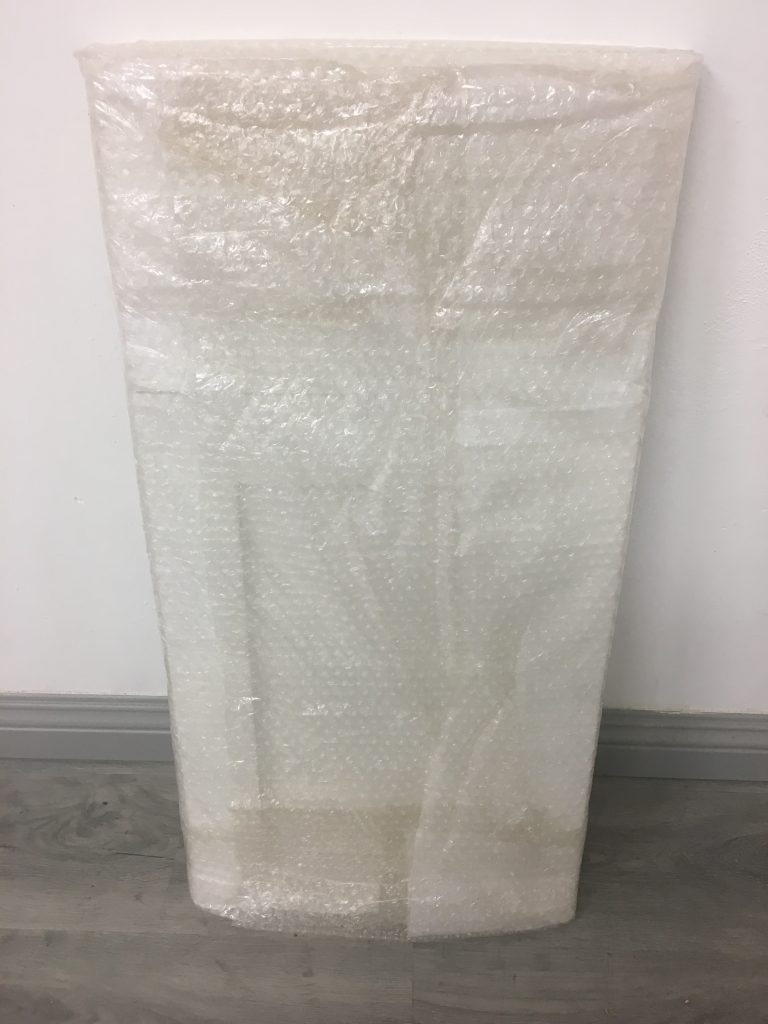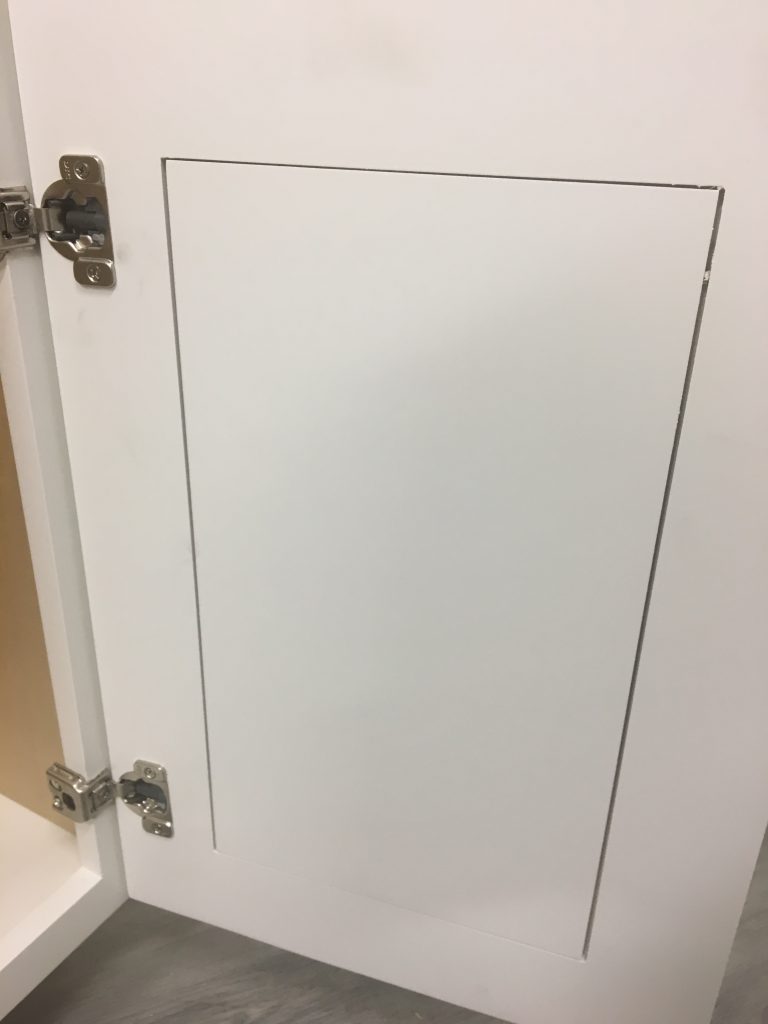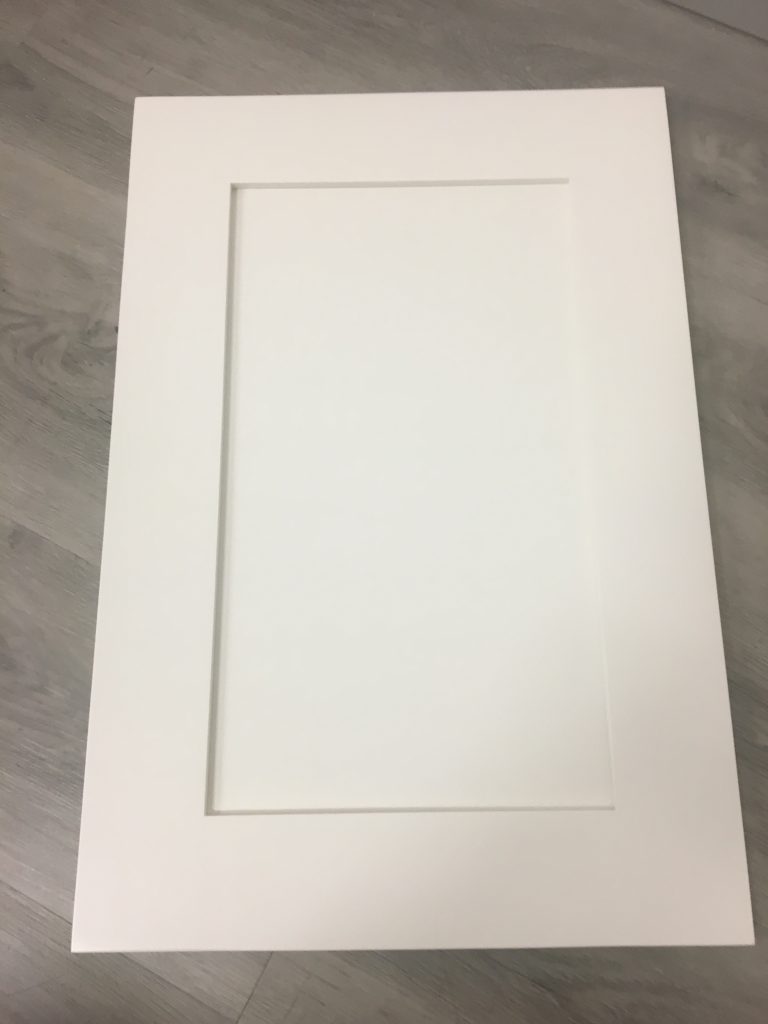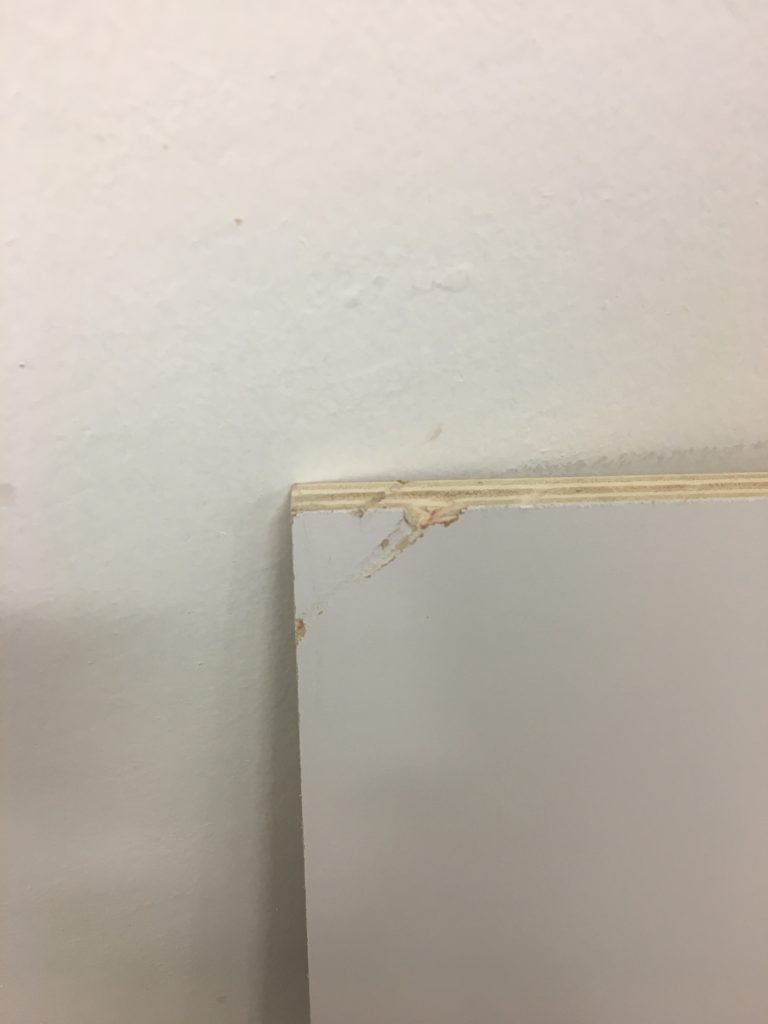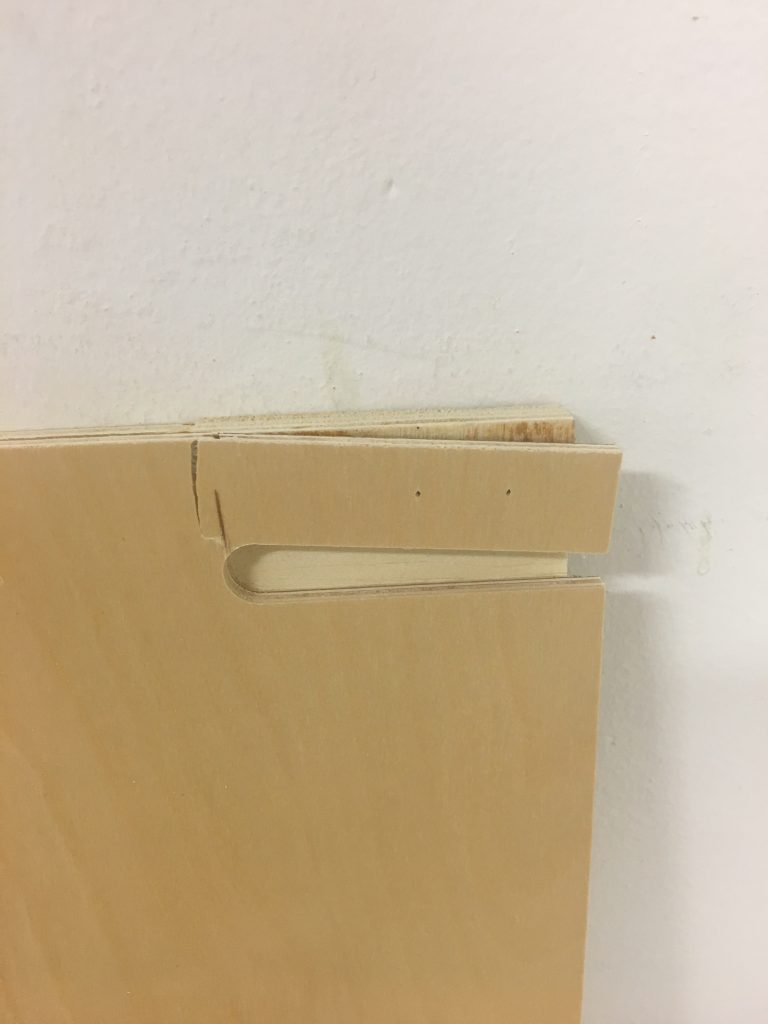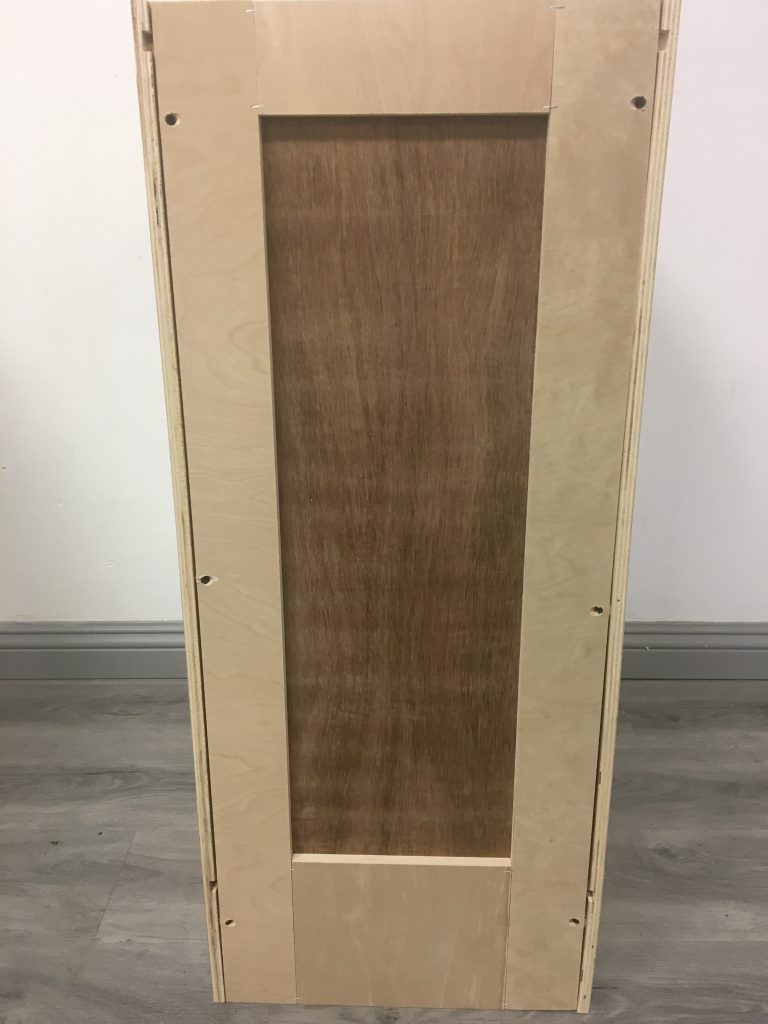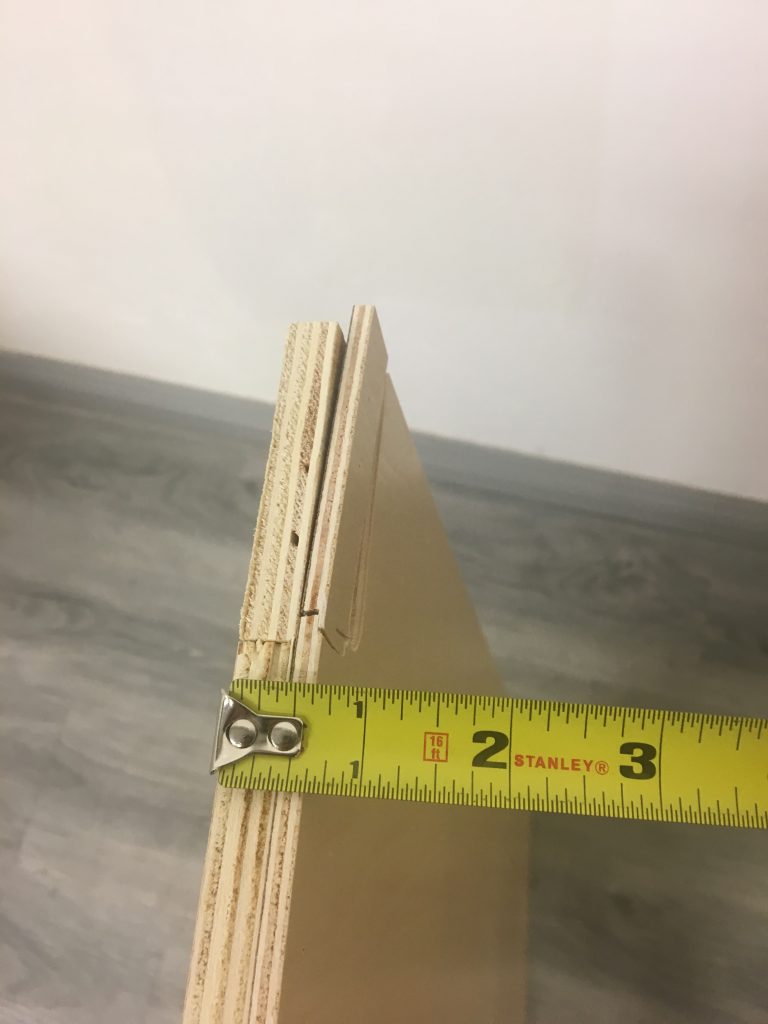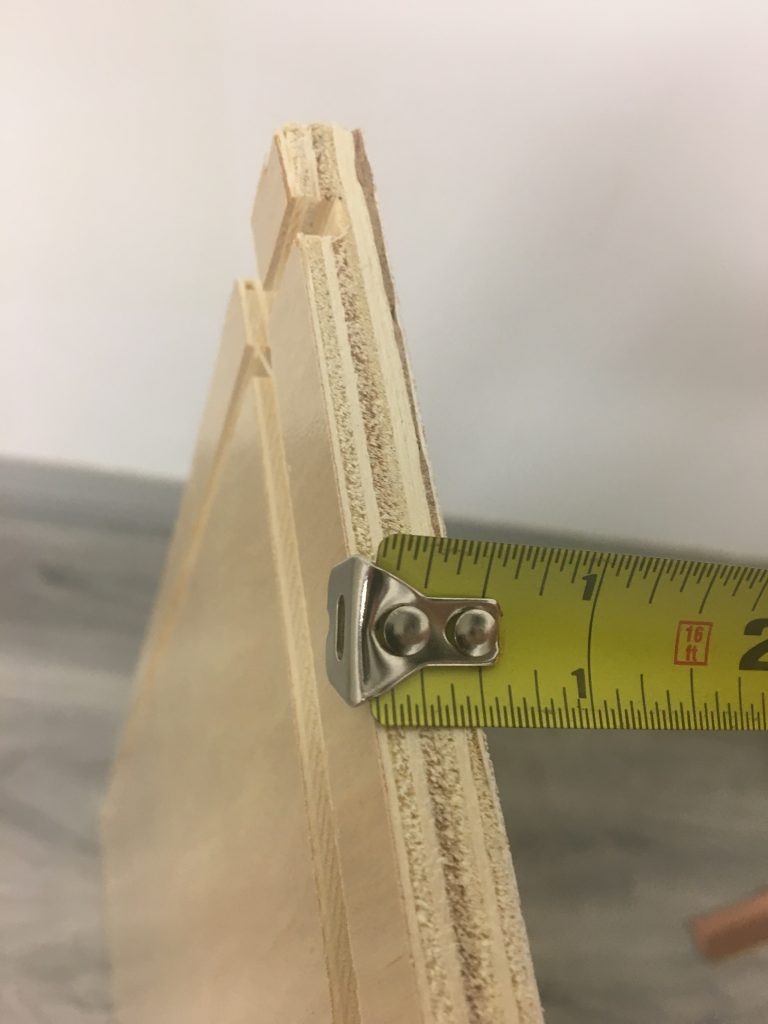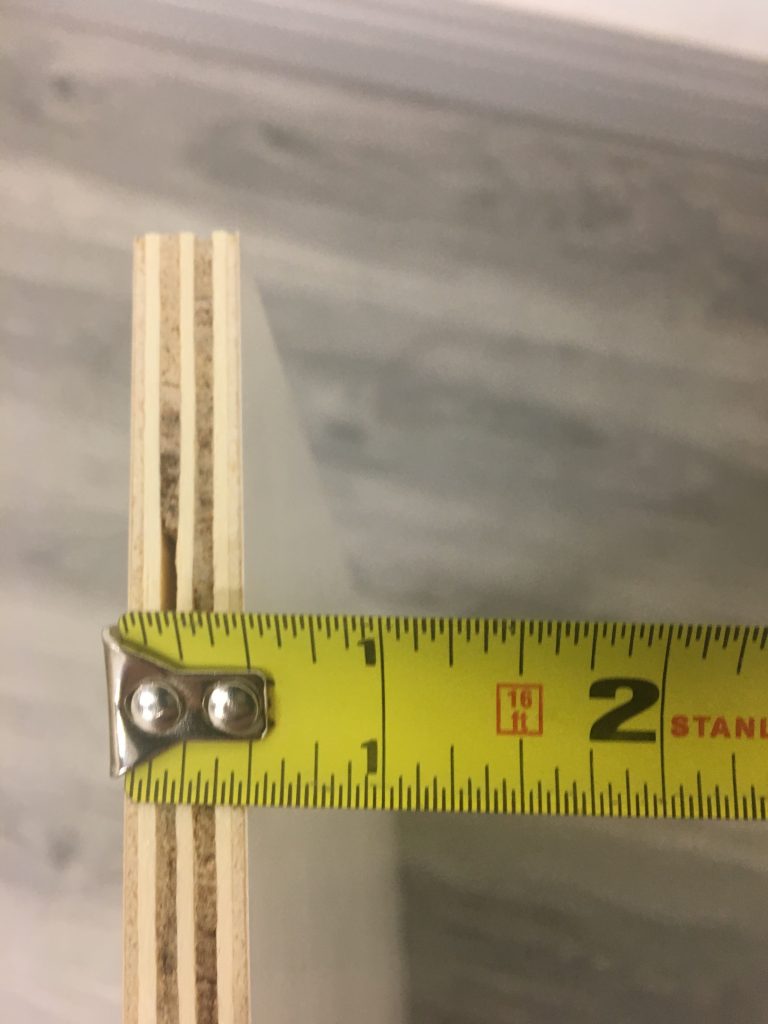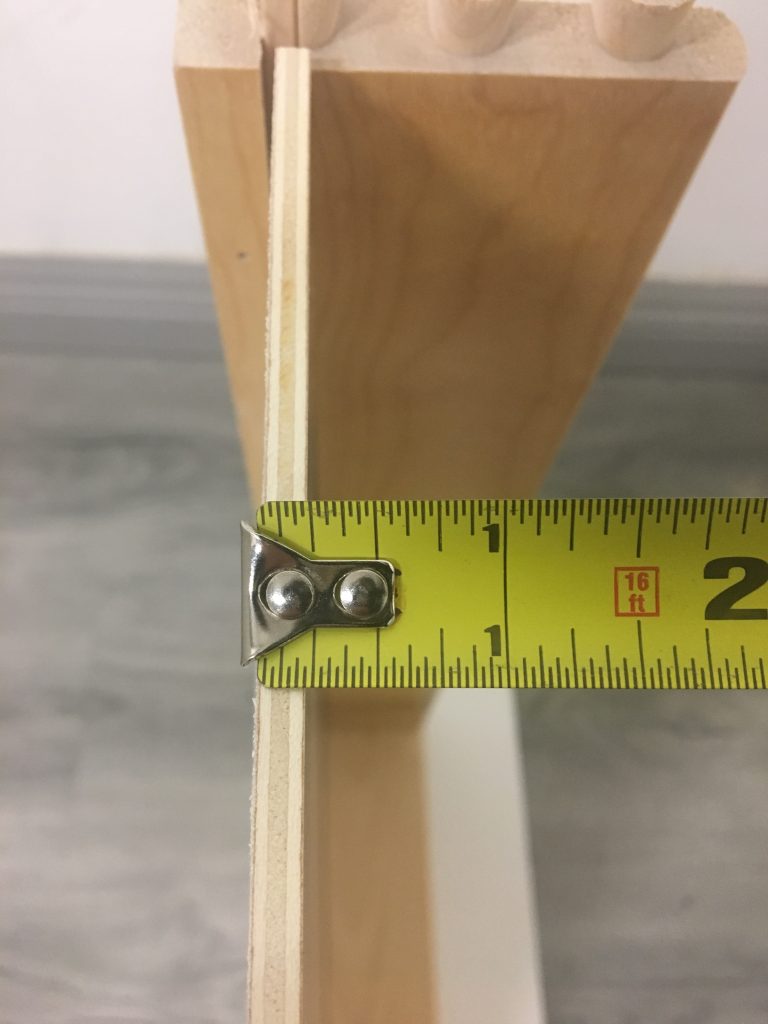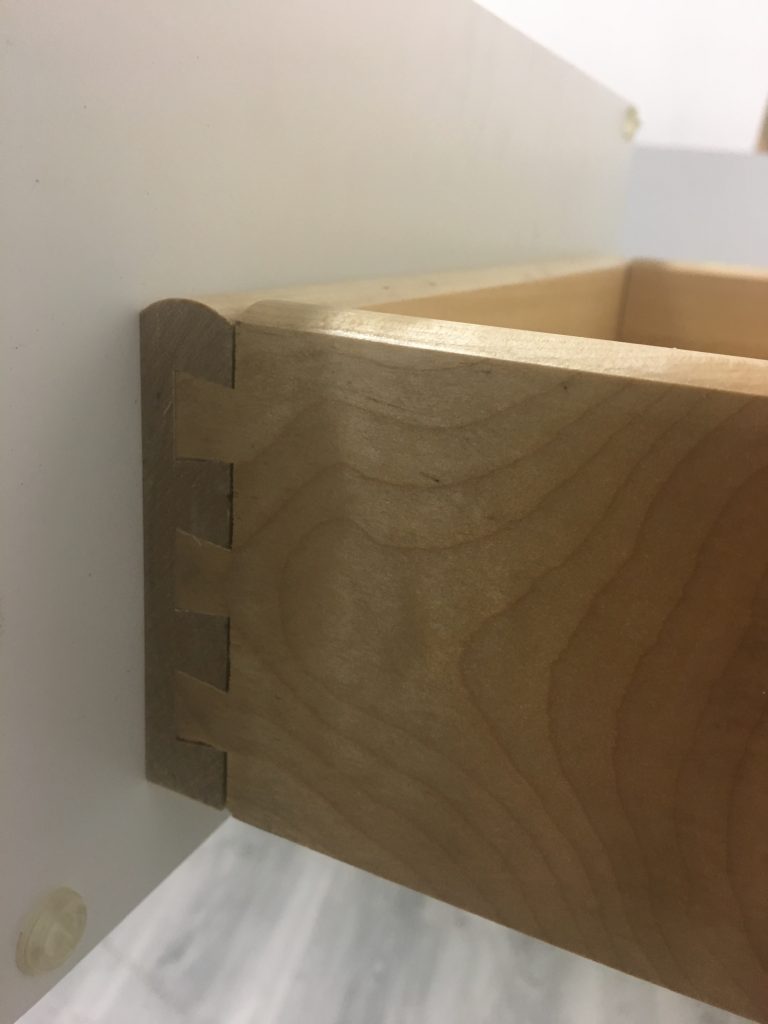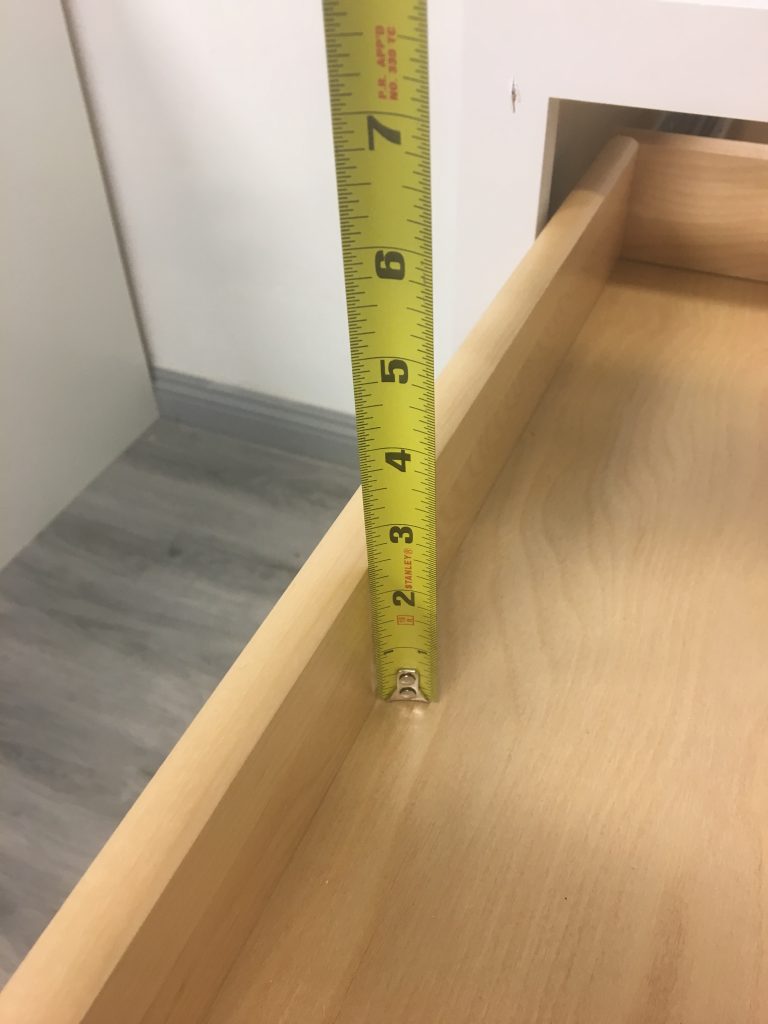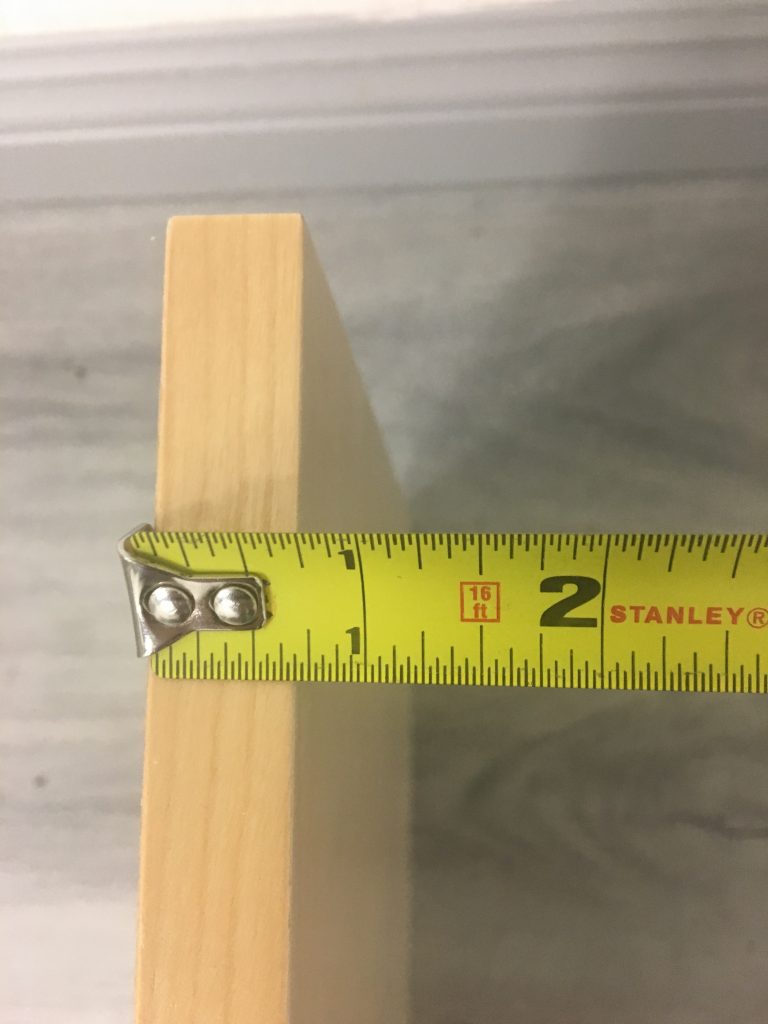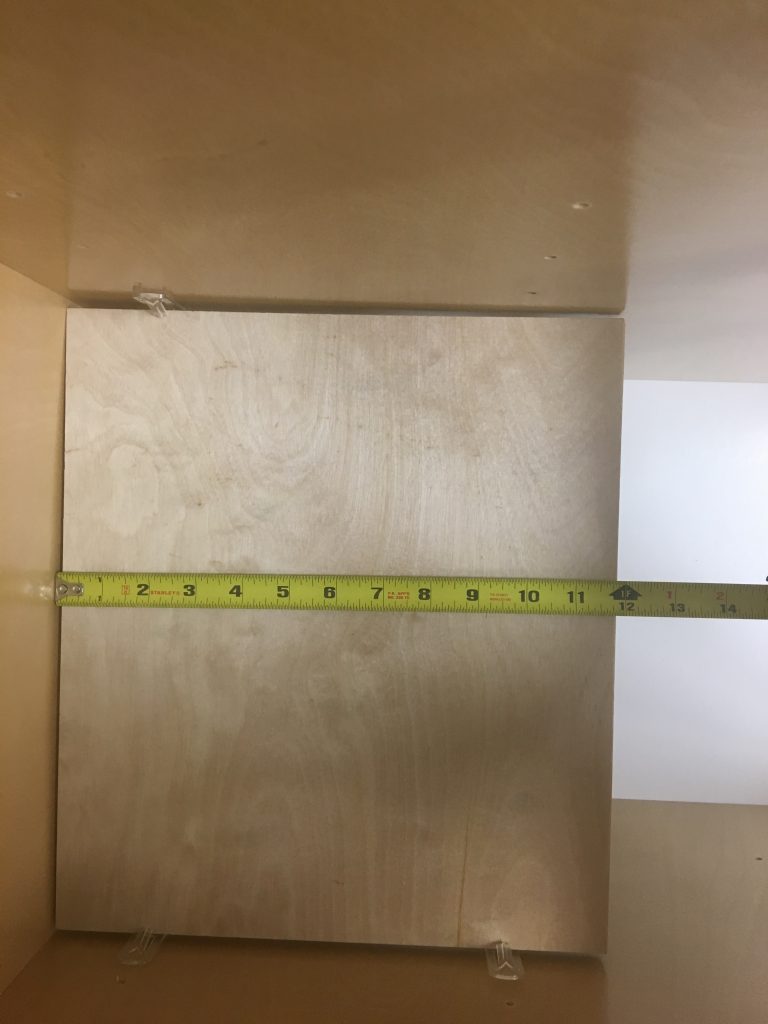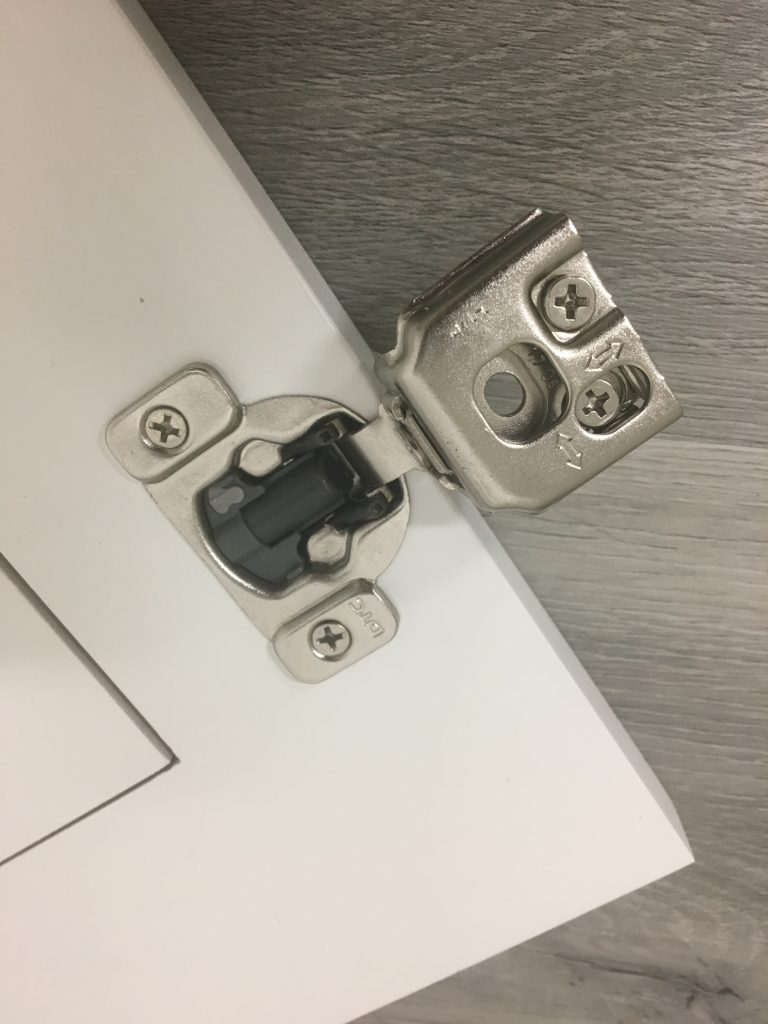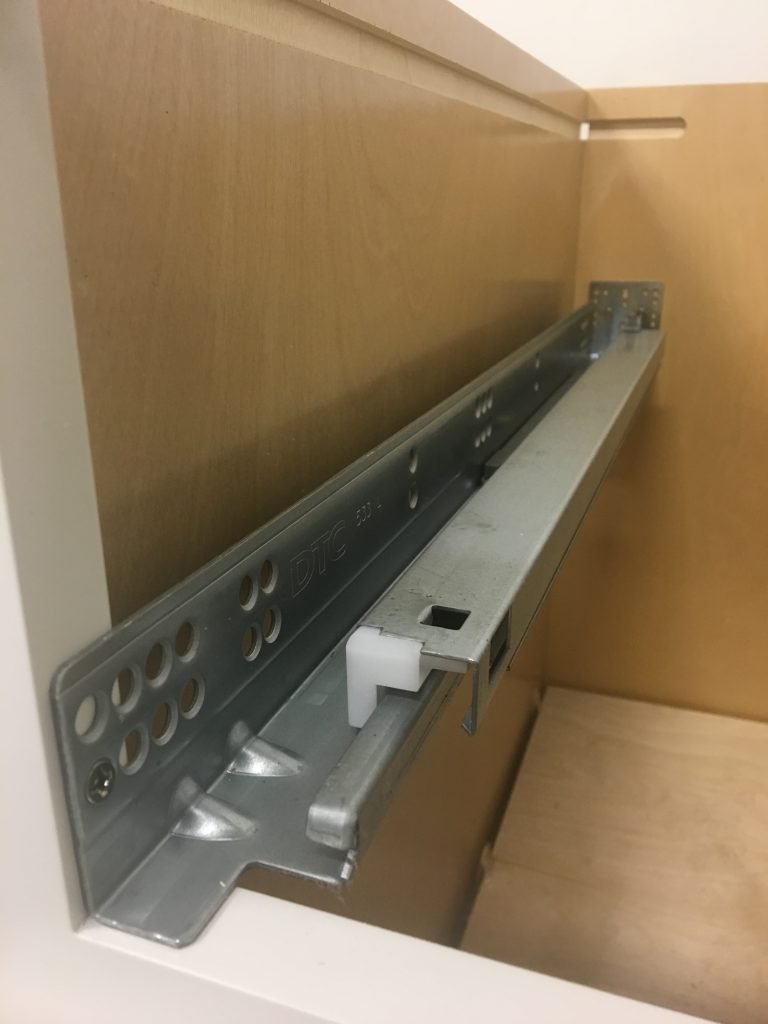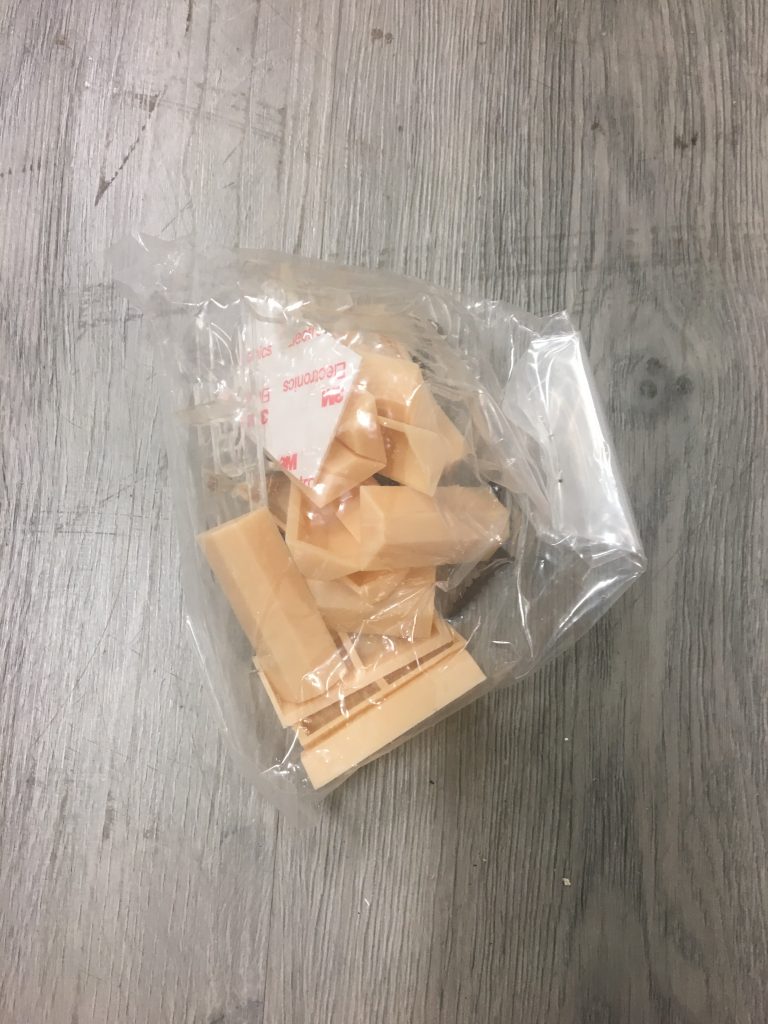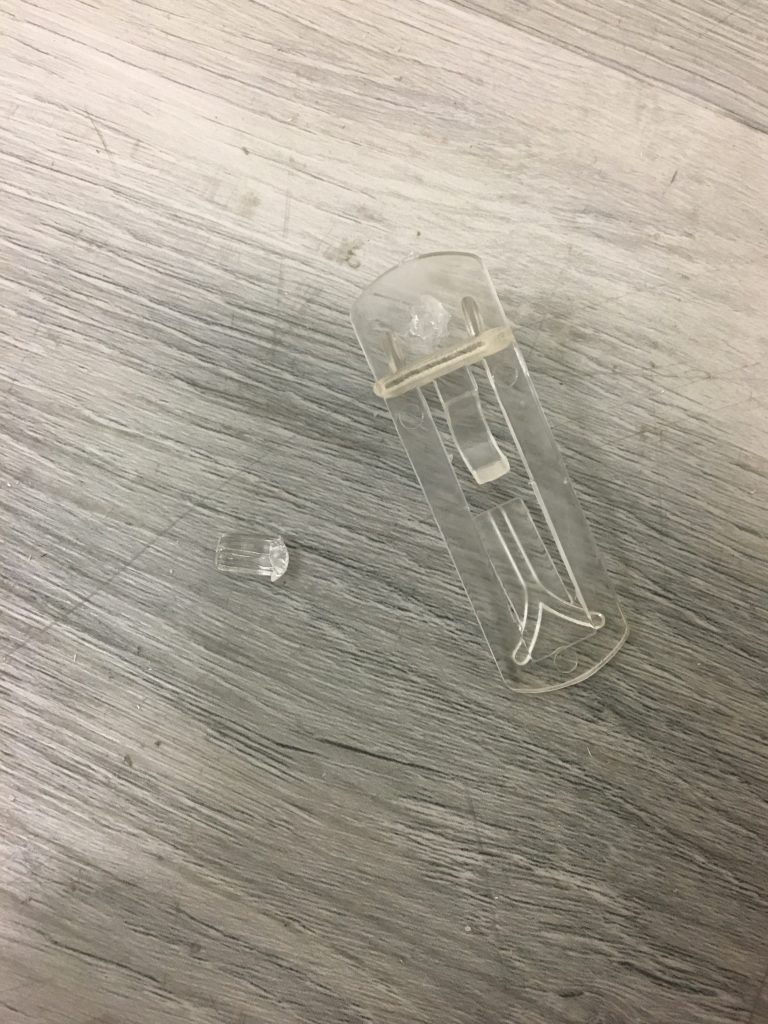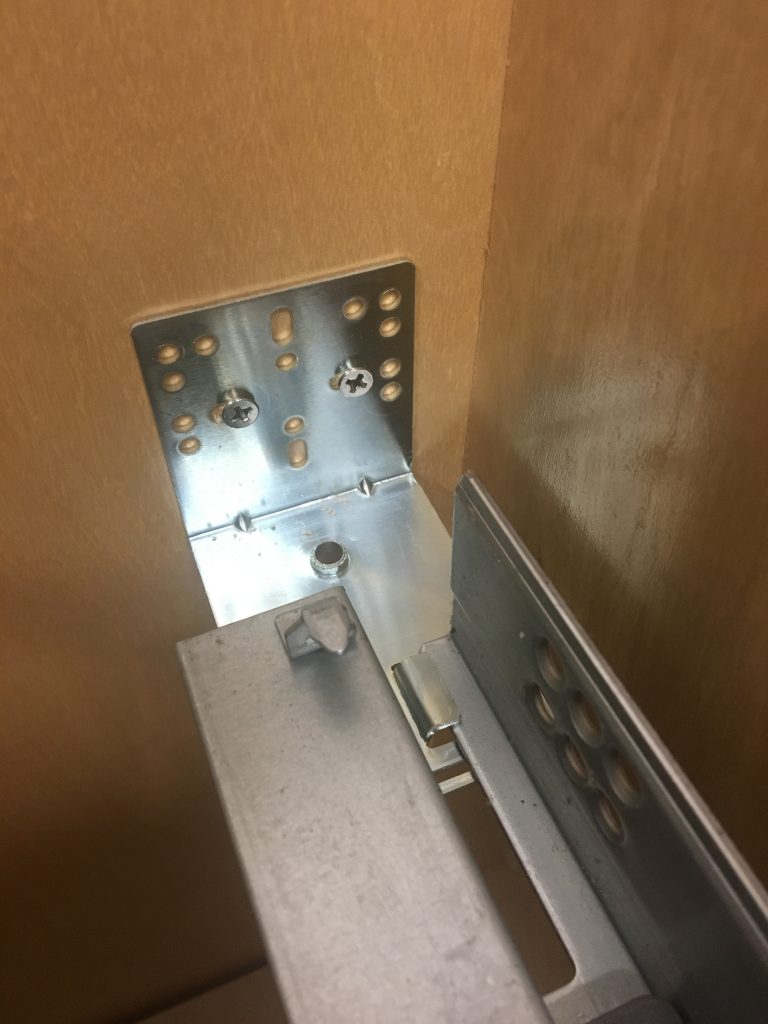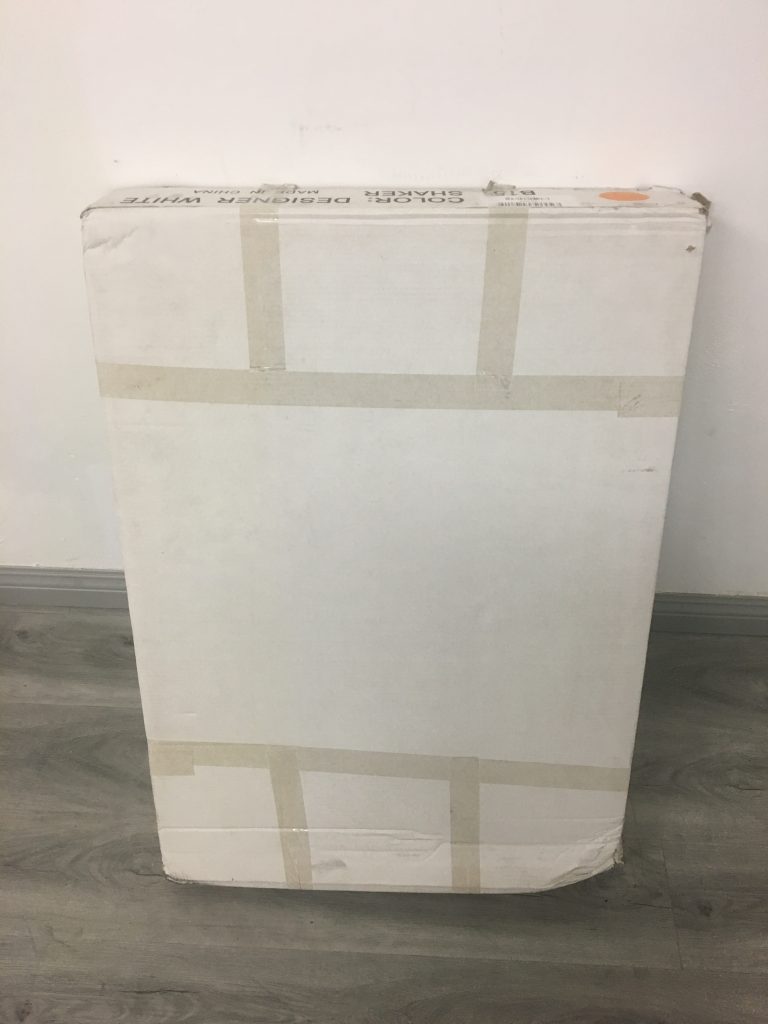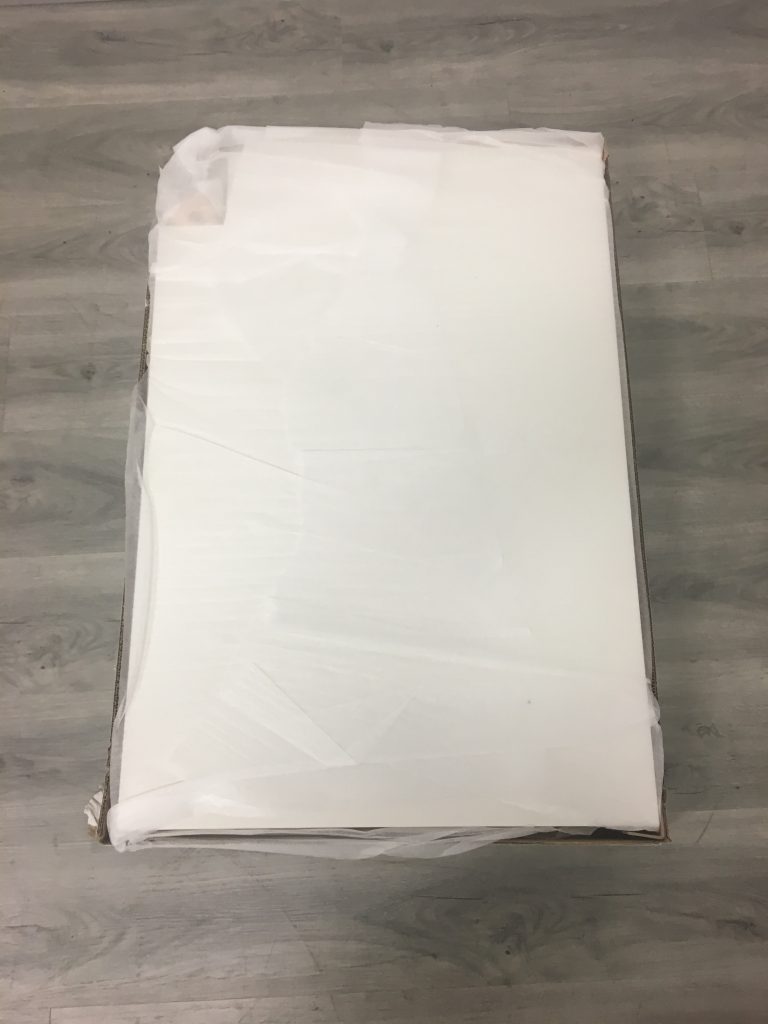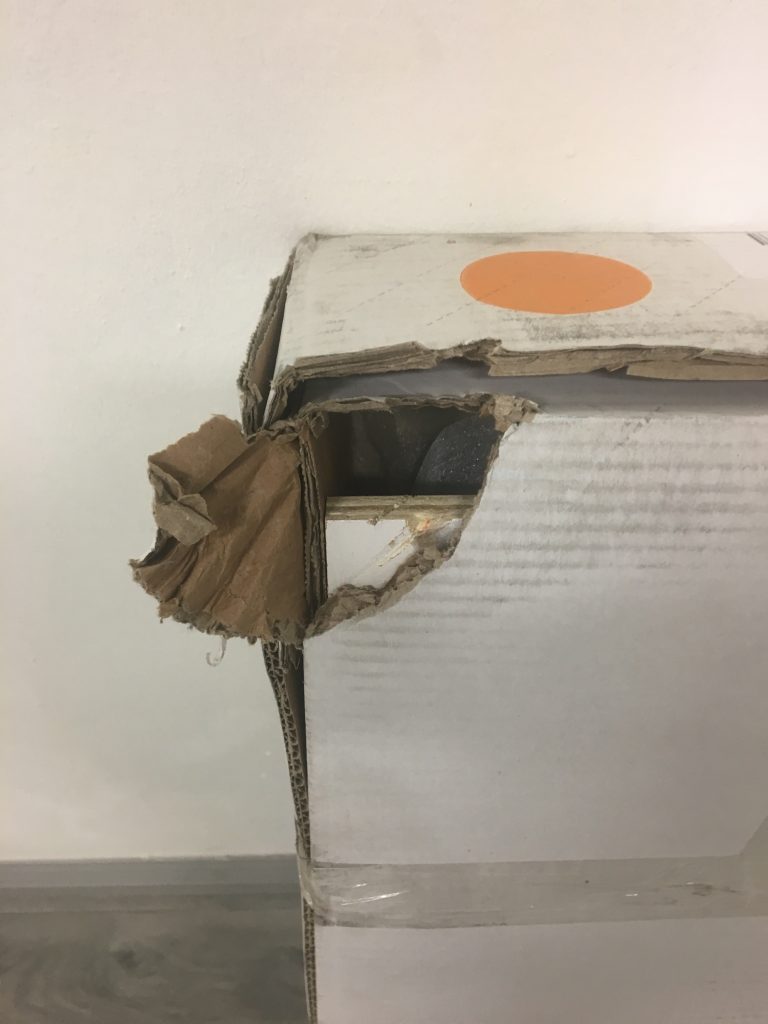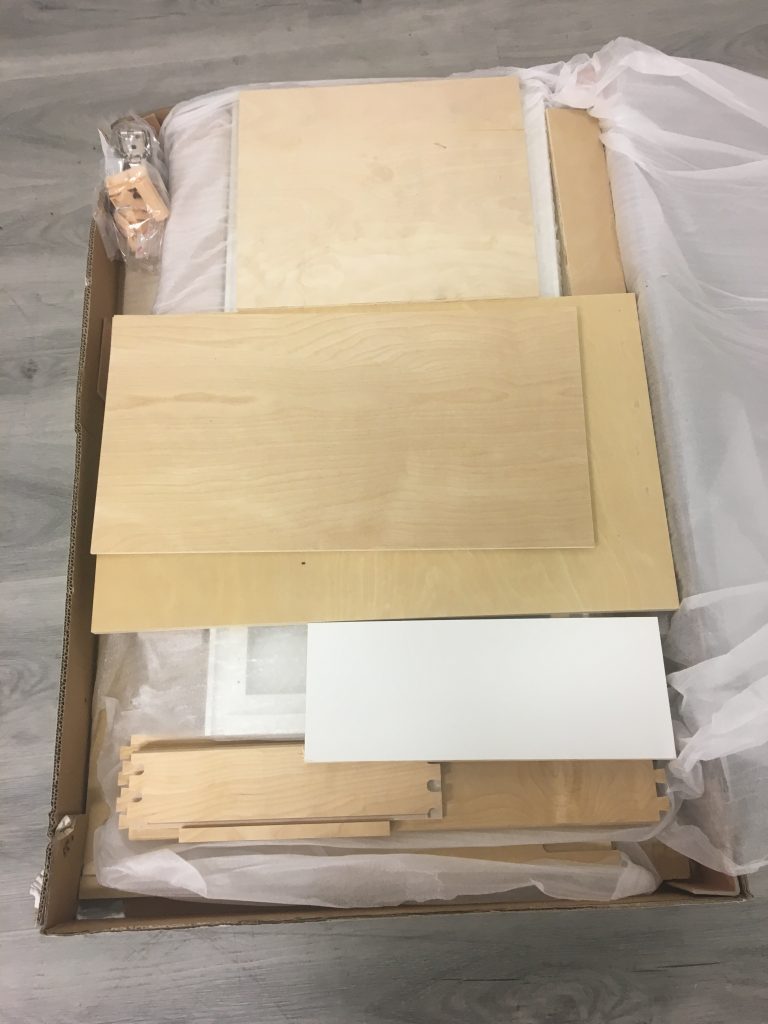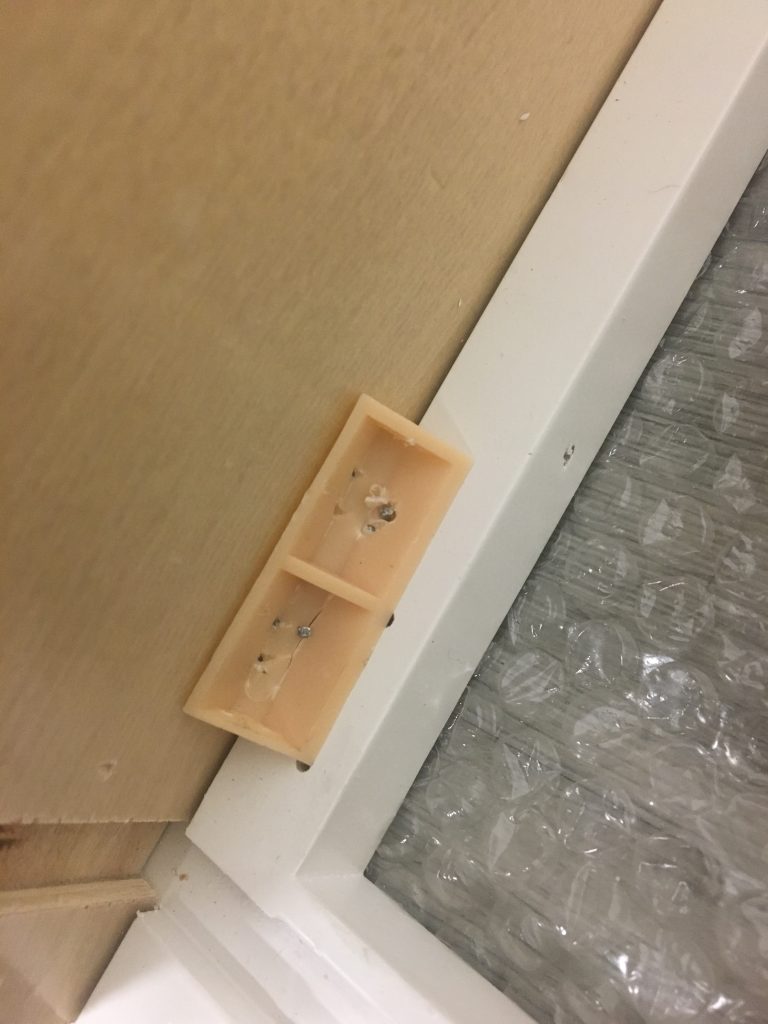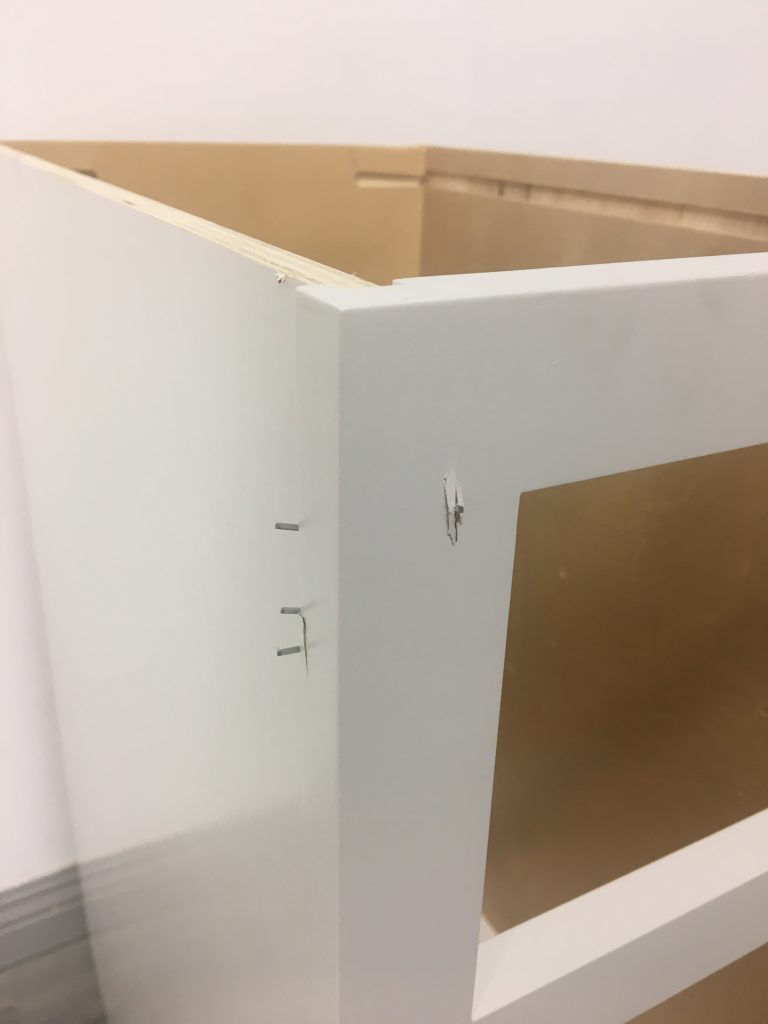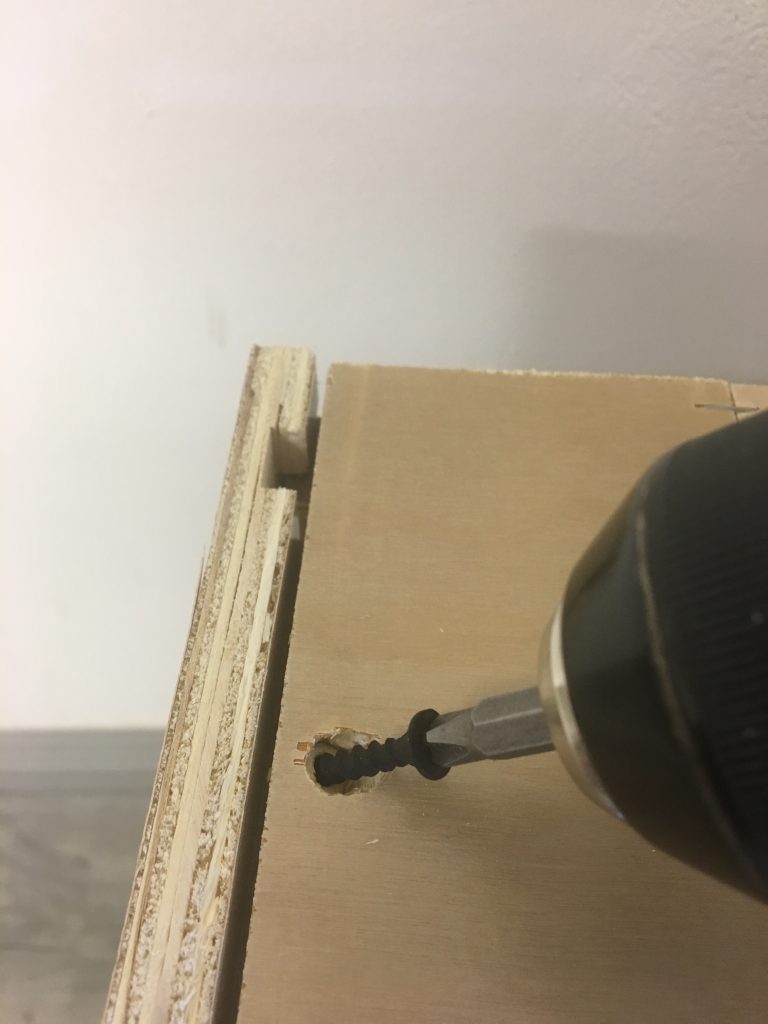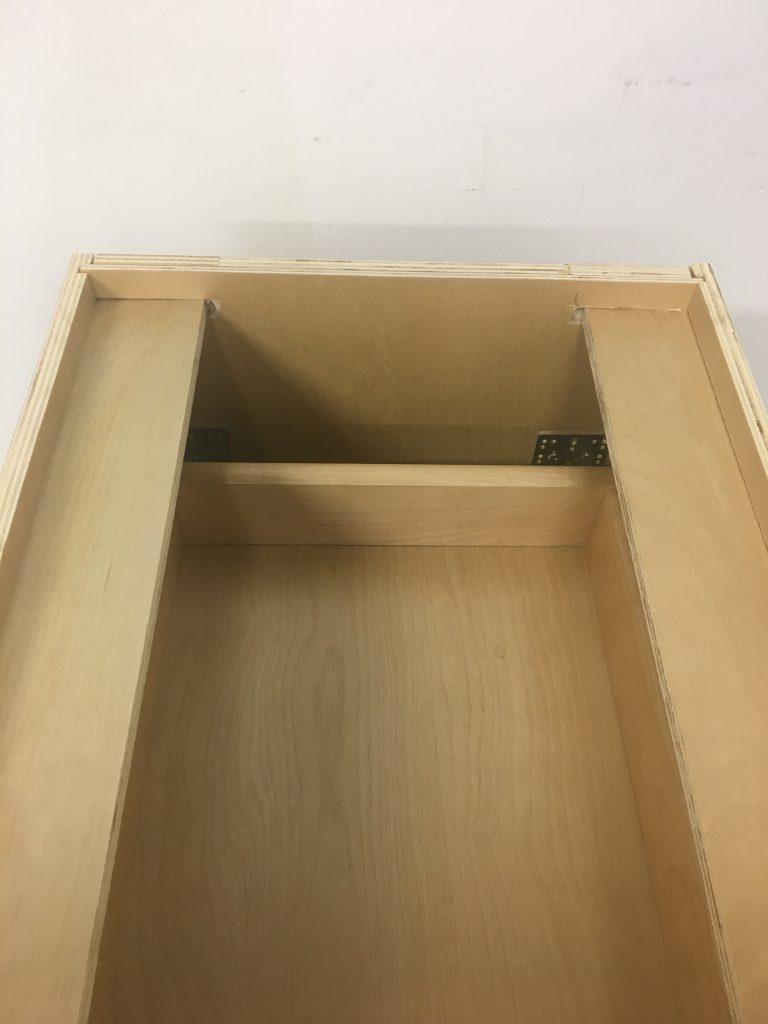2.7 Score
Aaaaand RTA Cabinet Reviews is Back with another review of a White Shaker unit, this time from Kitchen Cabinet Distributors. Given our most recent article outlining the criteria we set when visiting a cabinet distributor’s website, we feel it important to give a brief overview of our initial impression of Kitchen Cabinet Distributor’s online store. With stark colors and clean, accessible fonts leading to clear landing pages, we had no problem finding the correct B15 White Shaker unit to write up our review. Immediately noticeable as well is the chat window at the bottom right hand corner of the screen; there is, however, one major catch to accessing this online chat that we will touch upon in further detail in a later section of this review. For the time being, we will commend the website for its clarity, navigability, professional aesthetic and move into our review of the White Shaker unit, itself…
And will ya look at that, we’ve got another White Shaker unit sent to us with the door, drawer face, and cabinet frame completely wrapped in styrofoam sheets and bubble wrap to protect the face of the unit! A major positive and something that we immediately regard with a positive nod of the head, we take this as a sign that Kitchen Cabinet Distributors value their product (or at least order their supply and inventory from a manufacturer who does). While this is something for which we give KCD their due credence and reward on the point scale, upon opening the bubble wrap and cutting away the styrofoam sheet we find a bit of a different product than originally anticipated…
Table of Contents
Wood and Frame
Cabinet Door, Frame, and Drawer Face
Protecting the face of the cabinet should be top priority for any cabinet distributor, and Kitchen Cabinet Distributors doesn’t hold back when it comes to ensuring the face of the cabinet is adequately wrapped and kept safe during transit (Picture 1). Upon opening the wrapping surrounding the cabinet’s ace, we find a slate-style drawer face composed completely of birch hardwood and a traditional five-piece shaker style door. The middle panel of the door is a reversible solid wood as well rather than the medium or high-density fibreboard we often see with shaker doors (Picture 2).
Reversibility of the door allows for a longer lifetime in a cabinet and keeps the exterior looking pristine over many years. As far as the actual frame of the door, it is held together utilizing a cope-and-stick method that, if proper paint and finish are applied, give the appearance of a smooth, clean, seamless border surrounding the middle panel. Birch hardwood composes the cabinet frame, with pegs holding the horizontal rails firmly to the vertical stiles with a similar seamless effect.
Grade: 4.0/ 5.0
Door Finish
A cabinet’s exterior face displays what will be seen by you as the homeowner and your guests, so we dedicate an entire section to detailing how the paint and finish of a unit is applied under a tight eye. The door is the most obvious (as well as the most used) part of a unit, and the door of the white shaker from Kitchen Cabinet Distributors displays to us a decent finish with no visible scratches (Picture 3). The paint appears to have been evenly applied across the surfaces of the door, the cabinet frame, and the slate-style drawer face. This can be a fairly difficult process to properly apply the paint given the small cracks and surfaces, but Kitchen Cabinet Distributors successfully provides a door with an even coat and fine finish, although the paint is not as thick as we would like to see on a cabinet that will be tentatively be living in a kitchen for years to come.
Grade: 3.5/ 5.0
Cabinet Box Interior and Exterior
Beyond the extra bubble wrap and styrofoam sheeting used to protect the cabinet frame, door, and drawer face, the other elements of the unit unfortunately did not receive the same attention as the face of this unit. Upon inspecting the side and back panels, we immediately notice some significant damage incurred during transit to multiple pieces, with large scratches in the paint and demarcations to the plywood composing the body panels of the Kitchen Cabinet Distributors white shaker. This speaks not only to the lack of protective packaging provided for the rest of the unit in its shipping receptacle, but to the paint and finish found on the interior as well as the exterior of these panels. The most noticeable damage can be found on the top left corner of the left side panel (Picture ), which won’t be visible once the cabinet is properly installed in a kitchen unless this side is exposed at the end of a row of units. So while this will not necessarily be seen once installed, damage to the wood, paint, and/or finish of any kind is an immediate representation to us of the value placed in the cabinet.
Regarding the interior finish of the white shaker from Kitchen Cabinet Distributors, it is a thin yet evenly applied laminate veneer, susceptible to minor scrapes and scratches. Although this will not be readily visible until the cabinet is open and used, over time regular wear and tear will work this interior finish off until the natural wood is exposed and continue to damage that until sanded and refinished with a stronger veneer.
Grade: 2.0/ 5.0
Box and Storage
Cabinet Box
Beyond damage to the paint and finish found on the exterior of the unit, we found some possibly detrimental cracks in the plywood on the interior of the back panel, in the top right corner where routings have been cut for the I-beams (Picture 5). This damage proves to increase the difficulty in assembling the unit, as the broken wood forces the builder to exercise extreme caution when fitting the panels together at the risk of causing even further breakage in the back panel. This speaks to the quality of the plywood itself, illustrating that a lower quality wood has been utilized in the panels that will make up the body of the white shaker. Constructed with a picture-frame receding middle panel, the back panel measures 5/8 inches thick with the inclusion of the broken 1/4 inch panel that establishes the interior for the back of the unit (Pictures 6 and 7). This picture frame back panel method of construction may appear thick and somewhat sturdy, but in reality is more liable to receive damage as evinced by the Kitchen Cabinet Distributor’s back panel of their white shaker.
A similar seven layer plywood composes the side panels of the cabinet box, measuring 1/2 inch in thickness with the quality of the plywood bearing a more unified and sturdy pressing than that of the picture-frame back panel (Picture 8). The thinness of this plywood is not ideal, as it will warp and wither much quicker than plywood side panels constructed on a thicker scale. While this thickness does still fall within the industry standard, it just meets the standards we set for quality panel composition; be that as it may, the consistency throughout the plywood is obvious and we tip our hats to the manufacturer for providing a plywood that
The bottom panel of the white shaker from Kitchen Cabinet Distributors offers a different look at the quality of the plywood used in the construction of this unit. This seven layer plywood measures the same thickness as the side panels yet shows some major discrepancies in the consistency of the plywood, as can be seen in Picture 9 above the measuring tape. Again, this particular cut of plywood displays no obvious warping or bends yet given the thinness of the wood and the inconsistency of the plywood it is inevitable that the bottom panel will eventually bow under the weight of cabinet contents, especially if the climate is humid. So while the plywood of the white shaker meets the minimum industry standards as far as thickness of the panels is concerned, the quality of the wood itself suffers from major inconsistencies in the bottom panel, damage to vital parts in crucial areas of the back panel, and a susceptibility to warping and bowing under duress from regular use and a humid environment.
Grade: 3.0/ 5.0
Drawer Box
Speaking on thin bottom panels, the same characteristic defining the bottom panel of the box of the unit is carried into the bottom panel of the drawer box. Measuring at 1/4 inch in thickness and possessing only three layered plywood, this is the thinnest drawer box bottom panel we have come across thus far in our cabinet reviews. Not only does this bottom panel fit loosely in the tongue-routed grooves of the side panels (Picture 10), but it will undoubtedly falter in supporting the weight of a filled drawer box and bow inward sooner rather than later.
The quality of the plywood appears to be nice enough, but given the thinness of the panel itself it will make little difference in the eventual fate of the wood. Were the panel to be an eighth of an inch thicker (which is the industry standard at 3/8 of an inch), it would fit snugly in the tongue-routed grooves and be capable of supporting much more weight as well as increase the lifespan of the drawer.
In each of the four corners of the white shaker drawer box from Kitchen Cabinet Distributors is found dovetailing with clean cuts and decent bites, cut in a three-toothed fashion. The strongest dovetailing in drawer boxes we have reviewed so far typically display a four-toothed bite, but the three-toothed dovetail cuts still hold steadily onto the receiving ends. Unfortunately, the 1/2 inch side panels are cut with arch-top molding which not only looks awkward but is detrimental to the functionality of the dovetail bites themselves (Picture 11). This particular type of molding on the panels weakens the ability of the dovetailing to hold fast onto the cuts, as opposed to a an even cut across the top of the panel that clenches the corners together even tighter without a lip protruding off the top that various articles stored within the cabinet could possibly catch upon and pull the panel apart. The wood is a nice birch hardwood, however, with a thick veneer finish that will endure regular wear and tear for many years.
Grade: 2.5/ 5.0
Storage
The storage capacity of a cabinet defines the most essential functional element of a unit, and our criteria is strict when it comes to examining how well the various cabinets we review can capably store items once installed. Since we have been discussing the nature of the drawer box of the white shaker from Kitchen Cabinet Distributors, we will continue examining this drawer box but through the lens of its storage capacities. The most obvious and efficient means by which we can gauge the storage is through drawer box depth, and in this arena the Kitchen Cabinet Distributors white shaker is severely lacking. Measuring at a mere 2.5 inches deep, this particular drawer box is much more shallow than the vast majority of drawer boxes we review on our website while still meeting the industry standard width as most of these same drawer boxes (Picture 12).
What a shallow drawer box means in terms of storage is that it cannot be depended upon to store as many or as large of items as the other drawer boxes, usually measuring 3 inches deep, can capably store. Ladles, larger spoons, can openers, and cutting boars will not capably be stored in this drawer box and as a direct result of the shallow depth, will catch on the cabinet’s frame when opening and closing the cabinet. Eventually, this is going to cause damage to the wood and paint of the frame, which could have easily been avoided if the manufacturer were to route the grooves on the side panels that are to receive the bottom panel just half an inch lower.
As far as examining the storage abilities in the the body of white shaker from Kitchen Cabinet Distributors, we look at whether or not the frame of the cabinet is constructed in a frameless fashion (also known as “flush-frame”) and the build of the shelf within the box of the unit. This particular cabinet does not exhibit the flush-frame feature, which is a distinctly European approach to cabinetmaking. The nature of a frameless cabinet body allows objects to be easily inserted and removed from the storage area of the box in addition to freeing up more space to keep items. It is not inherently a negative characteristic for units not to exhibit this feature, but we definitely give points on our grading scale for its inclusion because it illustrates a bold, modern, and utilitarian decision on the part of the manufacturer.
Seeing as this white shaker does not include the frameless feature, our focus will be on the shelf within the body of the cabinet box. Measuring 3/4 of an inch (Picture 13), finished on three sides, and composed of a solid hardwood material, the quality of the shelf itself is of a nice make. Were it to be finished on a fourth side, however, the maneuverability of the shelf would be increased as this would allow for the shelf to be flipped and reversed when regular wear and tear marks up one side. Where this shelf is truly lacking is in its length: at 12 inches long (Picture 14), this shelf hangs over just half of the cabinet body and leaves the other half as negative, empty space that is incapable of storing much of anything (save a few taller bottles of cleaning supplies) efficiently. These hanging half shelves are frustrating for cabinet owners because they leave so much potentially usable space in the cabinet body rendered useless for the mere fact that the manufacturer was looking to cut production costs, which illustrates that the focus is not on providing a quality product but a profitable one.
Grade: 2.0/ 5.0
Hardware
Hinges
Hinges will determine how hard or softly a door will hit the cabinet frame upon impact. Without soft close hinges, a cabinet door will continuously slam against the frame until the wood cracks on either the door or the frame. On the door of the white shaker from Kitchen Cabinet Distributors, DTC soft close hinges are mounted into pre-bored holes on the door then attached on the adjustable plate side to the cabinet frame (Picture 15). These DTC hinges are medium quality, just below the BLUM quality hinges that set the industry standard for the highest quality hinges on the market. Although they require mounting to the door on pre-bored holes and screwed into pilot holes found in the wood using wood screws. The process can be frustrating when attaching the door to the frame and could be made infinitely easier with a second set of hands, but with patience and careful alignment of the adjustable plate to the frame the task can be accomplished with relative ease.
Grade; 4.0/ 5.0
Drawer Slides
Similar to the function of the door hinges, the drawer slides of a unit determine the force with which the slate-style drawer face slams against the cabinet frame. In the case of the white shaker from Kitchen Cabinet Distributors, the DTC full extension soft close hinges perform this function appropriately, slowing the drawer down 3 inches from the cabinet frame and easing it into place silently. The biggest issue with these hinges we found was one of the arms that fits into the spring-sleeve on the undercarriage of the drawer glide had somehow popped out of place and we had to manipulate it back into the sleeve very gently in order to avoid any further damage. This could have been caused by rough handling during the packages’ delivery to us, especially given the condition of the exterior cardboard of the parcel, but more likely than not it was never fixed into place appropriately. Either way, the front of the drawer glides are tacked to the cabinet frame (as seen in Picture 16), while the back rests on metal anchors. Overall, the hinges can be expected to get the job done without the arm popping out of place again, but if you do decide this unit is for you be sure to check the undercarriage of both drawer glides to ensure they are appropriately aligned.
Grade: 3.5/ 5.0
Connecting Parts
Concerning the connecting parts of this unit, much is left for wanting on the part of the assembler. For holding together the side, back, and bottom panels together in creating the basic shape and structure composing the box of the unit, Kitchen Cabinet Distributors included hard plastic threshold fasteners. These plastic fasteners are intended to be nailed or stapled in place where two panels meet at a perpendicular junction and require use of a pneumatic gun in order to attach them to the panels, but we will hit more on that topic in the “Ease of Assembly” section of the review. Compared to the cam locks, “L” brackets, wood screws, and cleats we have seen time and time again in past cabinets that have crossed our workbench, these plastic fasteners are the lowest quality material and most difficult means by which we have experienced in joining multiple panels together in a reliable, sturdy fashion (Picture 17). To say they set the bar to a new low for our review criteria would almost be giving them too much credit.
Additionally, the plastic shelf brackets that came with the bag of Connecting Parts are made of the most flimsy, delicate clear plastic and can break in half if one were to cough too loudly nearby. One of these shelf brackets arrived to us with the peg that is supposed to hold it to the side panel completely broken off, which made it even more useless to us than a hammer to a barber (Picture 18). In the end, we were only able to use three of the four plastic shelf fasteners to support the floating half shelf, making it unreliable to set anything upon and continuously falls out of place whenever the cabinet is moved.
On a more positive note, the most redeeming asset included with the connecting parts of the white shaker from Kitchen Cabinet Distributors are the metal drawer slide anchors. Composed of a strong aluminum and capable of supporting more weight than the drawer box could possibly hold, these anchors are fastened to the back panel with wood screws tacked into pilot holes designated for the middle two borings on the vertical plate that flushes up against the back panel of the unit (Picture 19). The back ends of the drawer glides slide underneath two lips on the top side of the anchor’s perpendicular flat face, bolstering the drawer slide and allowing for the drawer box to slide back and forth along the track without falling into the body of the cabinet. However disappointing the rest of the connecting parts have proven to be, there is no denying that these drawer box anchors are among the highest quality we have yet come across in our reviews.
Grade: 2.0/ 5.0
Assembly and Support
Packaging
Surrounding the exterior of the white shaker from Kitchen Cabinet Distributors is single corrugated cardboard composed of a piece supporting the underside of the parcel and another covering the top (Pictures 20 and 21). Packaging tape holds these two cardboard pieces together and helps expedite the unpackaging process, as opposed to the single cut of cardboard that is more cumbersome to handle and properly dispose of once all the parts of the unit are removed. As we mentioned in the Wood and Finish as well as the Drawer Slides sections, some significant damage was received by the side and back panels during the parcel’s shipping journey to us. We noticed immediately the condition of the exterior packaging, with a large tear in the top left corner on the backside of the package (Picture 22). As you can see in the picture, the damaged side panel is visible through the hole in the package, therefore leading us to the conclusion that the packaging is not quality and as a result, the cabinet unit contained within it
suffered significant damage that devalued the product. Whether or not this tear was caused by the package catching on something or was ripped by hand, the damage remains the same and illustrates to us that value in having just one piece of single-corrugated cardboard as the exterior packaging: there is a less likely chance of the protective packaging catching on anything and tearing the cardboard, exposing the elements contained therein and making the cabinet susceptible to damage.
Upon opening the single corrugated cardboard and seeing what lies inside of the parcel, we are rather taken aback at the disheveled assortment of plywood and plastic bags containing the assembly parts for the unit. Typically, we see a very neat and organized layout to the cabinet elements but with the white shaker from Kitchen cabinet Distributors, there is no rhyme or reason to how the various components of the unit are kept within the packaging. How the panels and hardware are stored within the package is pivotal in maintaining the integrity of the wood, with most manufacturers sandwiching the majority of the smaller panels that makeup the drawer box and cabinet face between the two larger side panel. This unit packaged the two side panels on top of the rest of the unit elements, thus throwing off the weight of the parcel, making it difficult to handle and likely leading to the damage the panels received while in transit. A single styrofoam sheet is wrapped throughout the plywood parts, which is the bare minimum of protective packaging and does very little to prevent the panels from scraping and rubbing against one another.
Definitely worth noting again is the extreme care with which the cabinet frame, door, and drawer face are packaged. Wrapped tightly in a thicker styrofoam sheet with bubble wrap tautly taped at the seams, the white shaker’s face is thoroughly protected from the rest of the cabinet pieces banging around the interior of the parcel. We never hesitate to give credit where credit is due, and Kitchen Cabinet Distributors deserves their due justice for at the very least distributing a product focused on maintaining the integrity of the most visible element of the unit (Picture 24). The slate-style drawer face, cabinet frame, and the door are all in pristine condition once the bubble wrap and styrofoam sheeting is cut away, a testament to the packaging and definitely a positive characteristic in an otherwise menial packaging job. Also worth noting is the packaging of the drawer slides and (disappointing) connecting parts: a separate single corrugated cardboard within the parcel contains the drawer slides as well as the metal anchors, but the package appears to have suffered from whatever drop or catch damaged the rest of the parcel, which would explain why the arm of the drawer glide was removed from the spring sleeve. Overall, this packaging job holds its place as one of the more disappointing we have come across in our reviews, with the only saving grace for the unit coming in the form of the protective packaging encasing the cabinet’s display face.
Grade: 3.0/ 5.0
Ease of Assembly
As you can imagine from what we have already discussed in previous sections concerning the materials included for connecting the panels, this white shaker from Kitchen Cabinet Distributors was one of the more frustrating assembling jobs we have yet tackled in our review database. Whenever one issue was seemingly resolved, two more would pop up in its place and the challenges that came along with assembling
it solo were constant. At any rate, the plastic fasteners included for attaching the side panels to the cabinet face frame required use of a pneumatic staple gun, which luckily we have in our workshop. Be aware and prepared if you order this unit for your kitchen or bathroom to acquire one of these, which can easily be rented from your local Home Depot or Lowe’s hardware outlet. There are many issues that coalesce to make these plastic fasteners terrible to work with, but we will briefly touch upon the main ones. First of all, the staple gun is very difficult to place at just the right angle to tack the staple in just the precise location so that it bites onto both panels while also holding the plastic fastener between the perpendicular plywood panels (Picture 26). Second, the plastic has a tendency to crack if the staples are placed within too close a proximity of each other, which weakens the connection between the two panels and makes them liable to break apart if too much force is exerted in one direction or another. And last, buying the right size staple is crucial, because if they are too long the staple will go through not only the plastic fastener but the cabinet frame and panel as well (Picture 27). As in our case, the staples went through both and are sticking out through the wood, creating a safety hazard for any walking by and requiring a hammer to gently tap the sharp ends down.
Attaching the back panel to the side panels is a much easier process: four black wood screws are included and can be tacked at a 45 degree angle through pilot holes found on the back panel into the side panels to pull the two together (Picture 28). This is crucial in binding the panels together for a somewhat sturdy build to the overall unit, especially since connecting the toe-kick to the front of the cabinet means having simply too many staples protruding out from the sides and the front. The final piece to this jigsaw puzzle of a white shaker is placing the I-beams running longways along either side of the upper area of the unit, sitting above the drawer box (Picture 29). In order to get these placed in the correct position, we had to gently hammer them into place with a rubber mallet, all the while avoiding the plywood along the back panel that had already been damaged as well as ensuring we did not split the wood on the beams themselves. While they do add some minor additional stability, the trouble we had to go through in getting them into just the right spot could have easily caused more damage than what it is worth. With absolutely no instructions, requirement of cumbersome tools not readily found in every household, and inadequate connecting parts, this quite possibly takes the cake as the most trying cabinet assembly on our website.
Grade: 2.0/ 5.0
Support
The customer support offered on the Kitchen Cabinet Distributors website is interesting in that the website is easily navigable, with a live chat window immediately popping up as soon as you land on the home page. There is a major catch with the live chat: in order to get ahold of a customer service representative, you are required to like the Kitchen Cabinet Distributors Facebook page and surrender much of your personal information to them. This is a major invasion of privacy for a business to impose on a customer, as you will be consenting to an onslaught of advertisements from Kitchen Cabinet Distributors in agreeing to these terms in return for Customer Service that is much needed for a cabinet unit that is sub-par. A phone number is available to call, but we were not able to get ahold of anyone when we reached out. Overall, a very unsatisfying experience with both the product and the Support.
Grade: 3.0/ 5.0
Conclusion
Kitchen Cabinet Distributors is a prime example of an online retailer that has a very professional website design with crisp, flashy font and accessibility to many products. Those products, based on our experience with their B15 white shaker unit, leave much to be desired. Let’s focus on some of the positives:
- Professional website design, with easy navigability
- Clean, even paint on the door, frame, and drawer face
- Metal drawer slide anchors
- Nice birch hardwood composing the cabinet face
- High quality soft-close DTC brand door hinges
The negatives of this white shaker unit really sink the ship:
- Inferior exterior packaging that left multiple parts damaged
- Thin interior and exterior finish with several scratches and marks
- Half inch side panels susceptible to warping
- Shallow drawer box depth incapable of holding regular household items
- Floating half-shelf that leaves a large amount of unusable storage space
- Plastic fasteners that require a pneumatic staple gun to connect the panels of the unit together and crack very easily
- No instructions included, requirement of extra tools, and extremely frustrating to assemble without a second set of hands
- Absent customer support representatives to aid in the process
Our intent is not to bury Kitchen Cabinet Distributors or their white shaker unit, but to provide you as a homeowner with an honest opinion of the quality of this unit given our direct experience with the product and the company distributing said product. While there are undoubtedly positive characteristics to this white shaker, the negative aspects far outweigh those few positives and leave us with no choice but to give this cabinet the lowest score yet of any yet we have reviewed.
Final Grade: 2.7/ 5.0

